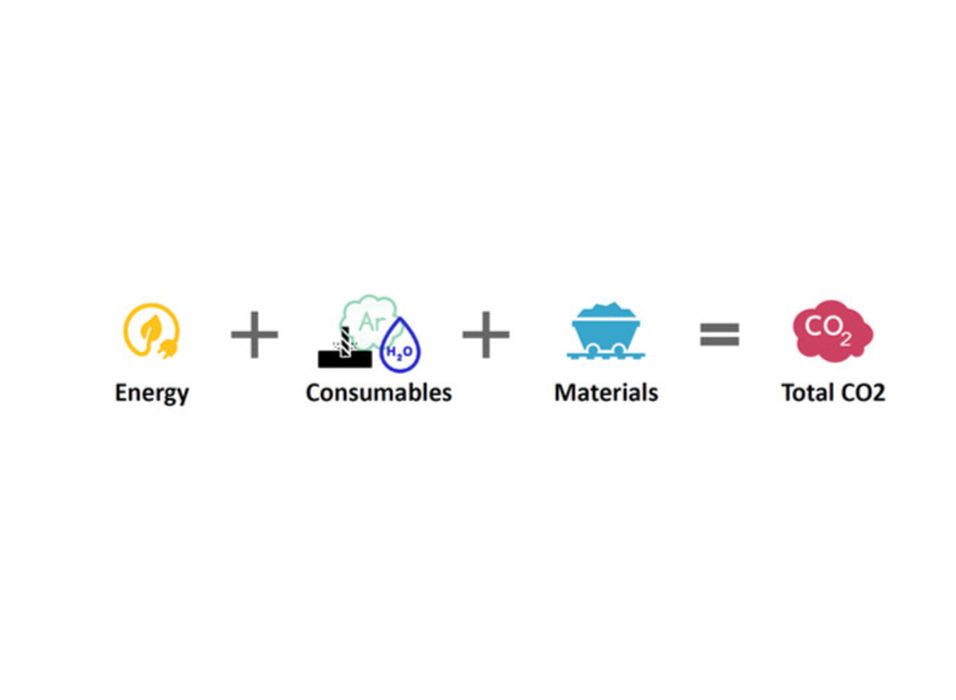
The devil is in the details, say researchers at Autodesk University.
CAD companies exist to sell you CAD software. But for Autodesk, the CAD company with a conscience, selling design and manufacturing software is not enough—it wants to tell you how to do it in an environmentally conscious way.
How exactly to do that was the focus of a presentation by Autodesk’s Matt Oosthuizen and Robert Bowerman titled How Can Sustainable Manufacturing Save You Money and Help the Planet delivered at Autodesk University 2022, which recently concluded in New Orleans. Below are highlights from their presentation.
The pair measured, estimated and studied the environmental impact as measured in kilograms of carbon, which is typically released into the air as CO2 emissions at every stage in the design and manufacturing process of a stainless steel part.
Carbon in Manufacturing
The manufacturing process is an energy hog, according to Autodesk. Manufacturing is responsible for putting 9 billion tons of CO2[i] into the air every year.
Most of the carbon is emitted during the operation and maintenance phase of a product. So why is design important? Because 80 percent of how that CO2 is emitted is locked in at the product’s design phase. Take a car with an internal combustion engine. It will emit CO2 as long as it is being driven because its design has an internal combustion engine.

Manufacturing a part has a carbon cost as well. Autodesk had studied the manufacturing processes and measured the carbon emissions of several machines and processes. The presenters provided an example of a part created while considering its carbon cost and compared three manufacturing technologies:
- Additive manufacturing using a laser powder bed fusion machine
- Hybrid manufacturing: direct energy deposition (DED) and CNC milling
- CNC milling
The Long Road of Carbon
You might have considered the CO2 footprint of a car while it is on the road, but the total cost in carbon starts during the vehicle’s life cycle assessment (aka LCA), with the mining of the ore, its transportation and its creation, and then picks up again after the car stops working permanently, when it requires CO2 for its disposal and recycling.
The carbon accounting of the manufacturing process was extremely thorough. Oosthuizen and Bowerman started the carbon meter as soon as iron ore was extracted from the ground. The meter stays on, adding up carbon and dollars, as the ore is transported to the steelmaking plant,[ii] as the ore is crushed, refined, smelted, and so on—until it emerges as a shiny ingot of stainless steel and is ready to be turned into bar stock that can be cut on a CNC.
If the part is to be created by direct energy deposition (DED), the steel will need to be drawn into wire, increasing costs. If the part is to be 3D printed, solid steel is ground back into a powder state, an even more energy-intensive round trip.
Saved by 3D Printing?
The highlight reels of 3D printer companies invariably include the advantage of deposited only where it is needed—unlike those wasteful old technologies, like subtractive manufacturing (CNC) that are prone to wasting material. The added expense—and dangers of powder metal—are not mentioned in the sales pitch.
All this processing needed to make powdered metal is significant, but not a deal breaker in the big picture, according to Autodesk’s cost and carbon calculations.
The presenters did their homework, studying the energy requirements of materials and processes that will define the carbon footprint of a part that is being designed. There has been much research done on this subject and they had only one session in which to explain it. Only a few minutes into the presentation, you got the message: It’s complicated to determine the carbon footprint of a part. You might fidget in your seat wondering if, in your desire to save the planet, you’ve taken on too formidable a task. But patience will be rewarded. Oosthuizen and Bowerman promise that one day, there will be a sustainability meter add-on to Fusion 360 that will display the part’s carbon footprint in real time as you are designing the part.
“Wait … maybe they already have,” says one.
Autodesk’s Fusion 360 updates itself automatically through an Internet connection. User’s find out about them with what’s-new “feature flags.”
And there it is! A feature flag shows that tool paths now have carbon costs. DED machines are fully supported and show carbon costs, too. Material carbon costs have been in Fusion 360 for some time.
Generative Design
We wondered when generative design would show itself. Autodesk takes every opportunity to show off its experiments in generative design and this session was one of them. Generative design, which can create the least-mass part, was a natural fit in a session that equated more material with more carbon costs. One of the 3D-printed parts in the study had a twist: it was hollow except for an internal lattice structure.
Autodesk used a triple clamp (a motorbike part that connects the fork members to the steering tube) for the example. Generative design, set on pure additive manufacturing (no machining) resulted in a part using the least material. The triple clamp went from 2.28 kg to 1.53 kg. Such dramatic saving in mass would be the end of the story if a 3D printing company were telling it. But for our intrepid researchers, it was not a dunk for 3D printing.
Read the rest at ENGINEERING.com
